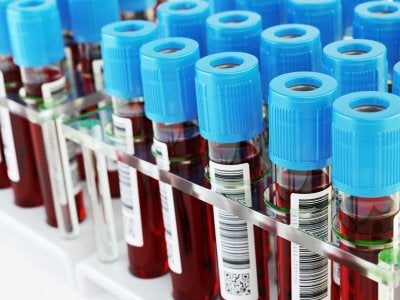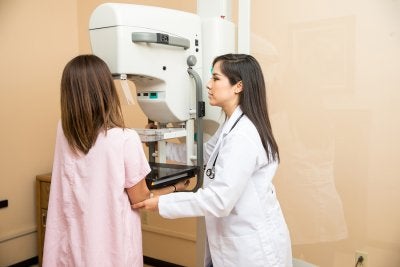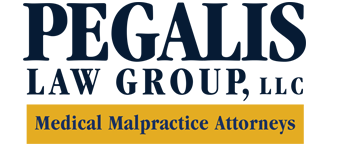-
Is There a Cure for Erb’s Palsy?
 Erb’s palsy is a condition that affects approximately one in every 1,000 newborns. It involves nerve damage to the brachial plexus, the network of nerves in the upper arm. Infants who have Erb’s palsy may demonstrate a number of symptoms, including difficulty moving their hands, loss of feeling in their arms, or simply weakness throughout the arm. In some cases, the condition will resolve itself on its own, but it may take up to two years, and recovery may not be complete. Simple physical therapy exercises can be done to help the healing process along. In some cases, surgery may be recommended.
Erb’s palsy is a condition that affects approximately one in every 1,000 newborns. It involves nerve damage to the brachial plexus, the network of nerves in the upper arm. Infants who have Erb’s palsy may demonstrate a number of symptoms, including difficulty moving their hands, loss of feeling in their arms, or simply weakness throughout the arm. In some cases, the condition will resolve itself on its own, but it may take up to two years, and recovery may not be complete. Simple physical therapy exercises can be done to help the healing process along. In some cases, surgery may be recommended. At Pegalis & Erickson, LLC, we understand that medical malpractice is a difficult subject, especially when it affects an infant. If you are seeking legal guidance for a case of medical malpractice in Long Island, New York, call our legal team at (516) 684-2900 to schedule a consultation.
-
Surprising Facts About Missed and Delayed Diagnoses
When most people go to the doctor, they bring with them the assumption that they will find out if there is anything wrong with their health. Unfortunately, this isn’t always the case. It is nowhere near as rare as you might assume for medical practitioners to fail to diagnose a serious health problem—or to diagnose it too late. Here are some facts that might surprise you:
 Diagnostic errors are extremely common. According to a recent study by the Institute of Health, about 5 percent of all Americans who visit a medical professional in the course of a year will receive a faulty diagnosis. This adds up to about 12 million people. The study also observed that the number of diagnostic errors appears to go up over time, as medical treatments increase in complexity.
Diagnostic errors are extremely common. According to a recent study by the Institute of Health, about 5 percent of all Americans who visit a medical professional in the course of a year will receive a faulty diagnosis. This adds up to about 12 million people. The study also observed that the number of diagnostic errors appears to go up over time, as medical treatments increase in complexity. Almost everyone will receive at least one wrong diagnosis. While 5 percent may not sound like an enormous amount, the number of people who are wrongly diagnosed multiplies with each passing year. The Institute of Health study found that most people living in the U.S. will experience at least one late—or flat-out wrong—diagnosis at some point in their lives.
Diagnostic errors can be hard to identify. It’s easy to assume that you’ll know when you’ve been wrongly diagnosed—but that isn’t necessarily true. Many people do not discover for years that they have gotten the wrong diagnosis. Diagnosing a patient is a challenging and multifaceted process, and there are many points at which the diagnosis can go astray. In many cases, the issue is lack of proper communication between medical professionals and their patients.
If your life—or the life of a loved one—has been disrupted by a delayed diagnosis, you may have a medical malpractice claim. Talk to one of the attorneys at Pegalis & Erickson, LLC, for legal guidance that will help you protect your rights. You can set up a free consultation at our office in Long Island, New York, by calling us at (516) 684-2900.
-
Spotlight on Infectious Disease Errors
 If you have an infectious disease, being misdiagnosed—or diagnosed too late—can have serious consequences. If an infectious disease isn’t treated and worsens, the changes in your life may be irreversible. That’s why it’s important to be a proactive patient and take the initiative to help ensure that your diagnosis is accurate. Be open and communicative with the healthcare providers you interact with, and don’t hesitate to contact them if your health status changes. If you aren’t satisfied with your current doctor, find a new one. Keep your own medical records, including a list of all your appointments, a record of your symptoms and when you experienced them, and a list of all your medications. Having that information at your fingertips will also be useful for any medical practitioner who is treating you, and it can help to increase the chances of positive patient outcomes.
If you have an infectious disease, being misdiagnosed—or diagnosed too late—can have serious consequences. If an infectious disease isn’t treated and worsens, the changes in your life may be irreversible. That’s why it’s important to be a proactive patient and take the initiative to help ensure that your diagnosis is accurate. Be open and communicative with the healthcare providers you interact with, and don’t hesitate to contact them if your health status changes. If you aren’t satisfied with your current doctor, find a new one. Keep your own medical records, including a list of all your appointments, a record of your symptoms and when you experienced them, and a list of all your medications. Having that information at your fingertips will also be useful for any medical practitioner who is treating you, and it can help to increase the chances of positive patient outcomes. If you believe you have been misdiagnosed, it’s time to contact Pegalis & Erickson, LLC. You can reach our office in Long Island, New York by calling (516) 684-2900.
Many people do not discover for years that they have gotten the wrong diagnosis. Diagnosing a patient is a challenging and multifaceted process, and there are many points at which the diagnosis can go astray. In many cases, the issue is lack of proper communication between medical professionals and their patients.
If your life—or the life of a loved one—has been disrupted by a delayed diagnosis, you may have a medical malpractice claim. Talk to one of the attorneys at Pegalis & Erickson, LLC, for legal guidance that will help you protect your rights. You can set up a free consultation at our office in Long Island, New York, by calling us at (516) 684-2900.
-
How Proactive Patients Can Reduce the Risk of Medical Errors
It’s the responsibility of healthcare providers to ensure the safety and well-being of their patients. Unfortunately, acts of medical malpractice and negligence happen every day around the country. Patients can protect themselves by being proactive about identifying and preventing medical errors.
 Background Check
Background Check You may not always get to choose your doctor, such as when you’re taken to the emergency room. When you do have a choice, take a few minutes to research the doctor’s background. The ideal healthcare provider will have:
- Training at respectable institutions
- Board certification in his or her specialty
- No professional disciplinary actions
- No consistent history of prior medical malpractice lawsuits
If you’ll be undergoing surgery or another complex treatment, such as treatment of cancer, take a close look at the doctor’s level of experience. For instance, if you’ll be having hip replacement surgery, don’t be afraid to ask your orthopedic surgeon how many of these surgeries he/she has performed, and what is their particular complication/success rate.
Informed Consent
Before having a medical procedure, such as surgery, your doctor is required to obtain your informed consent. In other words, you have the legal right to be fully informed of every aspect of your treatment, including the potential risks and alternatives. You also have the right to reject a proposed treatment after weighing the pros and cons of the plan of care. If you’re uncomfortable with your treatment plan, you can continue to ask questions, learn about your diagnosis and the treatment, and seek a second opinion from another healthcare provider.Medication Safety
Medication errors are a common type of malpractice. A mistake can occur at any point in the process—from the doctor’s initial prescribing information to the pharmacist’s dispensing actions to the nurse who administers the medicine in the hospital. Before taking any medication, make sure the prescribing doctor has your full health history. If you’re receiving medication in the hospital, ask the nurse to verify the name and dosage of the drug, cross-referenced with your patient records and your medications you are takingAt Pegalis & Erickson, LLC, we’ve made it our life’s work to tirelessly advocate on behalf of patients on their families. Contact our malpractice law firm on Long Island, New York at (516) 684-2900 if you think you’ve been affected by an act of medical negligence. Some of our negligence and wrongful death lawsuits have resulted in multimillion-dollar jury awards for our clients.
-
What Are the Benefits of Seeking a Second Opinion After a Diagnosis?
It isn’t always necessary to get a second opinion. Common, relatively minor medical problems like sinus infections and pink eye have straightforward treatment regimens that are widely accepted by medical professionals. But in some cases, a second opinion can prove invaluable. Medical malpractice lawyers recommend getting a second opinion after a diagnosis of any potentially life-threatening, disabling, complex, or rare condition.
Second opinions reduce the risk of a misdiagnosis.
Doctors have advanced education and training, but they’re still capable of making mistakes. It’s possible for another doctor to see something that the original physician overlooked. By talking to another physician, you’ll learn whether the initial diagnosis was made without the benefit of various lab tests and imaging scans that you should have had. The second doctor might even discover that appropriate tests were ordered, but were somehow left out of your records, and so they weren’t considered when the initial diagnosis was made. You’ll discover the original doctor’s level of confidence in the diagnosis.
You’ll discover the original doctor’s level of confidence in the diagnosis.
Good doctors aren’t offended when their patients inform them that they are seeking a second opinion. On the contrary, most doctors should welcome the idea, as it means their patients are proactive, and they are truly getting involved in their own healthcare. Plus, a doctor who has full confidence in his or her diagnosis will also have confidence that another doctor will confirm the diagnosis. If your doctor attempts to dissuade you from talking to another physician, this could be an indicator that getting a second opinion is imperative, and also that you may want to switch doctors.You’ll get more information about your diagnosis.
Even if the initial diagnosis is correct, getting another opinion can still be beneficial. Some patients talk to another physician when they aren’t fully satisfied with the information given to them. Another doctor can help address your questions more thoroughly, and he or she can discuss your treatment options with you.Medical negligence lawyers serving patients in New York urge families to seek a second opinion after any major diagnosis. Unfortunately, it’s still possible to be affected by medical malpractice even after taking steps to protect yourself. If you feel you could benefit from our legal advocacy services, please don’t hesitate to call us at (516) 684-2900.
-
Understanding the Difference Between Mistakes and Malpractice
The legal definition of medical malpractice is often misunderstood. Most doctors, nurses, and medical technicians genuinely try to do their best for their patients, but they’re human and mistakes do happen from time to time. However, the literal definition of medical malpractice is bad practice. Not every medical mistake rises to the level of a legal medical malpractice action. A medical mistake is an incorrect act or an act of omission. For example, a nurse may misread a doctor’s written instructions, and give a patient too much or too little of a medication.
 If the patient suffers no harm as the result of the medication error, then it’s merely a mistake which fortunately did not cause harm. Malpractice occurs when a healthcare provider makes a mistake or commits an act or an omission that deviates from the accepted standard of care, and causes harm to the patient.
If the patient suffers no harm as the result of the medication error, then it’s merely a mistake which fortunately did not cause harm. Malpractice occurs when a healthcare provider makes a mistake or commits an act or an omission that deviates from the accepted standard of care, and causes harm to the patient. Medical malpractice cases across New York are what we handle here at Pegalis & Erickson, LLC. Call (516) 684-2900 to request your free case review at no charge.
-
What Is the Time Limit for Filing a Medical Malpractice Claim?
In the legal field, time limits on filing medical malpractice claims are known as statutes of limitations. State law establishes the deadlines for particular types of claims filed within that state. In New York, patients effected by medical malpractice have just two and a half years to file a claim. There are limited exceptions to this rule and in regards to the specific type of medical malpractice. There are also shorter statutes of limitations when the malpractice occurs in New York State owned and operated hospitals or a hospital owned and operated by a municipality. Whether the injured party is an adult or a child, alive or deceased, all impact the time to file a law suit.
 Get in touch with a malpractice law firm in New York as soon as possible after realizingyou may have been subjected to medical negligence, such as emergency room errors, or misdiagnosis,. You can call the dedicated team at Pegalis & Erickson, LLC at (516) 684-2900.
Get in touch with a malpractice law firm in New York as soon as possible after realizingyou may have been subjected to medical negligence, such as emergency room errors, or misdiagnosis,. You can call the dedicated team at Pegalis & Erickson, LLC at (516) 684-2900. -
Breast Cancer Awareness Month
October is Breast Cancer Awareness Month, which is also a good time to be aware of some common breast cancer malpractice issues, including the misdiagnosis and delayed diagnosis of breast cancer.
Breast Cancer Misdiagnosis
Approximately one in eight women in the U.S. is affected by breast cancer according to the American Cancer Society. For women in the United States, breast cancer is the second deadliest form of cancer. It is also, unfortunately, one of the most often misdiagnosed forms of cancer. In many cases, breast cancer presents with subtle symptoms. Breast lumps, for example, are a common sign of breast cancer—yet many breast lumps are benign and coincide with hormonal changes. Sometimes, lumps are located in nearby lymph nodes in the armpit before they are located in breast tissue. Other more visible symptoms include skin changes such as dimpling of the breast, nipple discharge, itching and scaling of the nipple, and breast or nipple pain.
In many cases, breast cancer presents with subtle symptoms. Breast lumps, for example, are a common sign of breast cancer—yet many breast lumps are benign and coincide with hormonal changes. Sometimes, lumps are located in nearby lymph nodes in the armpit before they are located in breast tissue. Other more visible symptoms include skin changes such as dimpling of the breast, nipple discharge, itching and scaling of the nipple, and breast or nipple pain.Breast cancer diagnosis becomes challenging because of its nonspecific signs, which mimic many other less severe conditions. Still, it is important to mention any breast changes to your doctor, who can order further diagnostic exams to pinpoint the exact cause.
Delayed Diagnosis of Breast Cancer
A delayed diagnosis of breast cancer results in delayed treatment, which can cause women to lose their lives. Patients with invasive lobular carcinoma— a certain type of breast cancer— are especially susceptible to a delayed diagnosis, which can have serious consequences.In cases of misdiagnosis, doctors may treat patients for another condition, possibly causing damage to the body while the cancer continues to grow or even metastasize, which can result in increased symptoms and may be fatal. As with other forms of cancer, early detection, diagnosis, and treatment of breast cancer are key in increasing survival rates.
The five-year survival rate for breast cancer is nearly 100% for Stage 0 and Stage I, but a delayed diagnosis may not be found until the cancer moves into Stage II, III, or IV (which only has about a 22% survival rate).
If you have suffered from a breast cancer misdiagnosis or a breast cancer delayed diagnosis, contact Pegalis & Erickson, LLC for a case review at (516) 684-2900.
-
Recognizing Instances of Hospital Malpractice
Medical malpractice can have life-altering consequences for patients. An attorney can help affected patients pursue the compensation they need to move forward with their lives. It’s possible to name a hospital as a defendant along with one or more healthcare providers. For instance, a medical malpractice lawyer may present evidence that shows the hospital was negligent in failing to staff sufficient numbers of qualified healthcare personnel.
 This act of hospital malpractice can be particularly serious in the emergency department. If there aren’t enough ER doctors, or the ER doctors aren’t adequately qualified, substandard treatment or delays in treatment can jeopardize a patient’s health. A hospital might also be found liable for neglecting to refer patients for follow-up care with their primary doctors or a specialist.
This act of hospital malpractice can be particularly serious in the emergency department. If there aren’t enough ER doctors, or the ER doctors aren’t adequately qualified, substandard treatment or delays in treatment can jeopardize a patient’s health. A hospital might also be found liable for neglecting to refer patients for follow-up care with their primary doctors or a specialist. Patients who have been affected by acts of medical negligence near New York are invited to contact Pegalis & Erickson, LLC at (516) 684-2900. We are a malpractice law firm committed to empowering patients and their families.
-
How Birth Injuries Can Affect New Mothers
Birth injuries are a particularly tragic type of medical malpractice. It’s devastating to learn that a child will have a lifelong disability before he or she has a chance to enjoy childhood. Sometimes, new mothers are also affected by injuries during labor and delivery, and these can be fatal. After a wrongful death, families need answers and they deserve justice. A wrongful death lawsuit may be appropriate for some cases of maternal death.
Causes of Wrongful Death of the Mother

Despite the advanced healthcare system in the U.S., this country has the worst record for maternal deaths among developed nations, and more than half of those deaths are preventable. It’s possible for new mothers to suffer a fatal medical problem before going home from the hospital, but many of them die days or even weeks afterward. Some experts suspect that one reason for this is that the increased attention on the well-being of the newborn corresponds with a decrease in attentive care of the mother. As a result, hundreds of new mothers in the U.S. die from the following:
- Heart problems, including cardiomyopathy
- Massive postpartum hemorrhage
- Infections
- Preeclampsia (pregnancy-induced hypertension)
- Blood clots
Elements of a Maternal Death Case
Every civil lawsuit must have certain elements present to proceed. In maternal wrongful death cases, it must be proven that the mother’s death was the result of medical malpractice, and the surviving family has suffered losses as a result of the wrongful death, which can include loss of financial support, household services, love, and guidance. It’s possible for a lawyer to file the lawsuit against multiple parties, which may include the hospital, obstetrician, nurses, and other physicians who rendered negligent care and treatment.Consequences of Maternal Death
The death of a new mother is an unimaginable tragedy. The child will never have the opportunity to know his or her mother, and the other family members must cope with caring for a newborn in the midst of their grief, as well as their own individual loss. Nothing can make this situation better, but a lawsuit can give the family a sense of justice, as well as compensatory damages for medical expenses, funeral expenses, and loss of support and companionship.Pegalis & Erickson, LLC offers our sincere condolences to families affected by wrongful death. There is nothing that can bring your loved one back, but you may wish to pursue justice with a wrongful death lawsuit filed in New York. Call (516) 684-2900 and let us know how we can help your family.
Recent Posts
Popular Posts
categories
- Uncategorized
- Infographic
- Patient Safety
- Patient Health
- Stillbirth
- Birth Injuries
- Medical Malpractice
- Medical Negligence
- Event
- Erb's Palsy
- Injury
- ER
- Video
- Cancer Misdiagnosis
- Medication Errors
- Cerebral Palsy
- Medical Negligence Lawyer
- Anesthesia Injuries
- Brachial Plexus
- Prostate Cancer
- About Us
- Men's Health
- Skin Cancer
- Breast Cancer
- Misdiagnosis
